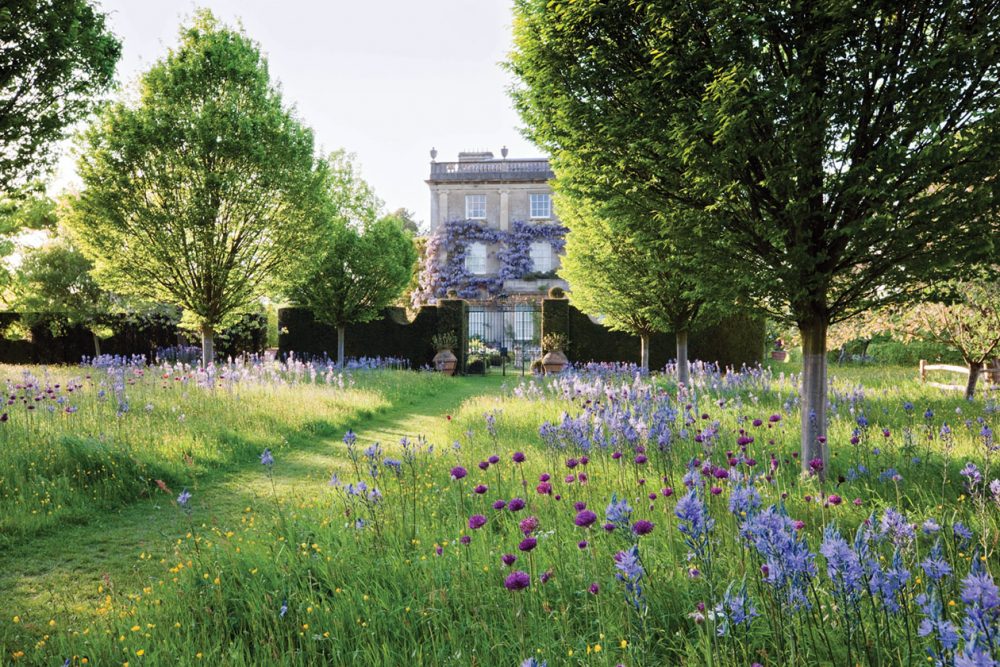
The Meadow at Highgrove is a vision of wildflowers, bulbs, and grasses, while purple and white wisteria on the house blend together in a pale violet mantle.

King Charles III in the colorful Kitchen Garden, which reflects his passion for organic gardening and is enclosed by 18th-century brick walls. (GAP Photos /Highgrove)
Originally published in May 2020. Updated May 1, 2023. The overwhelming experience of Highgrove exudes a sense that its inhabitants cherish every nook and cranny on the property. Elegantly set in Gloucestershire’s gentle landscape, where stone villages were once home to a thriving wool trade, the 340-acre estate featuring 15 acres of gardens generously welcomes visitors. Explaining his love affair with the house in a short film that precedes every guided tour, King Charles III describes the circumstances of his acquisition of a rather dilapidated property in 1980.
“I felt passionate about it,” he said of the 18th-century house and sweeping grounds. “I felt I could work with nature, not against her, and make as little impact on the environment as possible. They say gardening is reflective of a person’s soul, and that is a wonderful way to think about it.”
Landscape architect and historian John Phibbs, MBE, commented that in retrospect, the condition of the estate was actually advantageous to the king’s ambitious horticultural intent. “Because it had been neglected for so many years and was a blank canvas with virtually no garden or trees, it created a wonderful opportunity for King Charles to give expression to his longing to create a garden completely personal to his own tastes and release his particular talents in this way.”
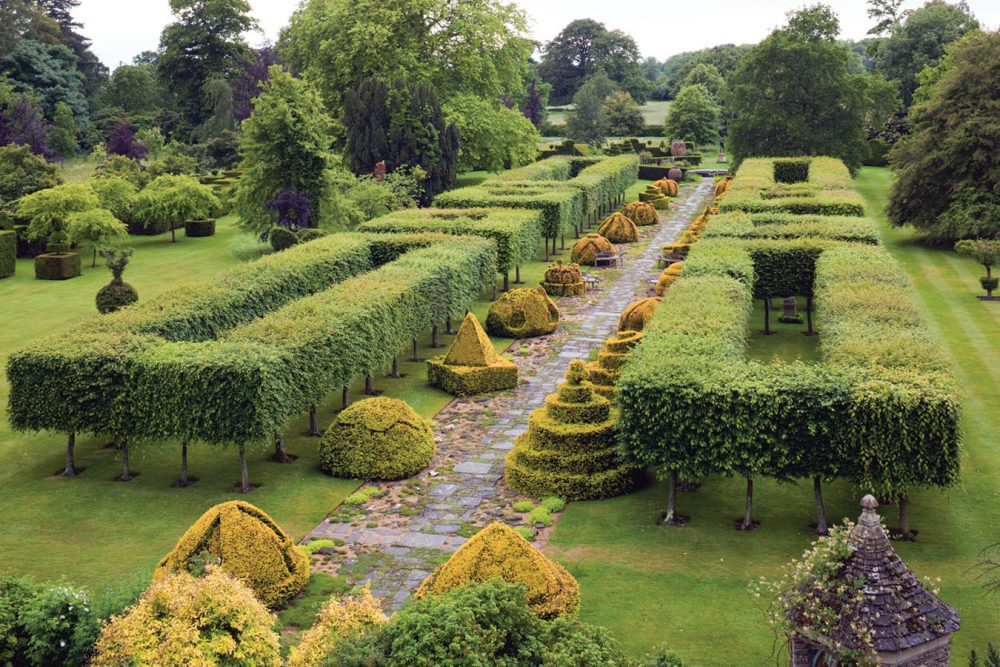
The Thyme Walk features a fanciful procession of clipped golden yews and scented thyme mounds underfoot. (Photo by GAP photos/Highgrove/A. Lawson)
As lucky visitors soon learn, during a subsequent guide-escorted ramble around the property, Highgrove’s delights evolve in a seemingly endless series of enchanting and often surprising vignettes that unravel like a beautiful ribbon through gates, along streams, and beneath canopies of mighty trees. After entering the first pair of carved Indian door panels that were a gift from his brother-in-law, Mark Shand, many guests confess to feeling an overwhelming sense of anticipation that borders on giddiness for what is to come.
Among the subsequent surprises, the Thyme Walk offers visual and sensory experiences that radiate from the fragrant crunch of thyme underfoot to the eccentric and curious shapes of the manicured golden yews and block-like pleached hornbeams that line the path.
Learn all about hornbeam trees.
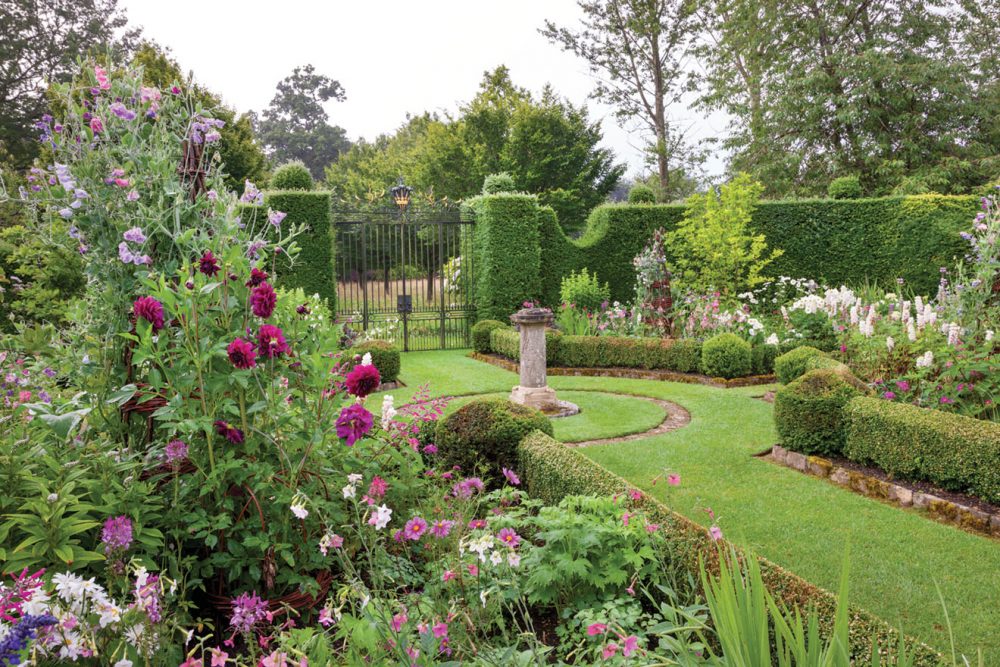
Encircled by a precisely pruned yew hedge, the Sundial Garden features architectural elements and structural planting.
In contrast, the Kitchen Garden is a charming, contained space, where old walls are covered in espaliered fruit trees; seasonal flowers create pops of color; and heavily scented blooms perfume the air. Bisected by a metal tunnel that supports apple trees, this space is a fairyland of pink blossoms in spring, while yielding bounteous harvests of produce and vegetables in the fall. Beyond, the four-acre Wildflower Meadow is a veritable haze of bobbing heads and swaying grasses, while the famous Stumpery imitates the Victorian practice of planting ferns and shade plants in and among petrified tree stumps.
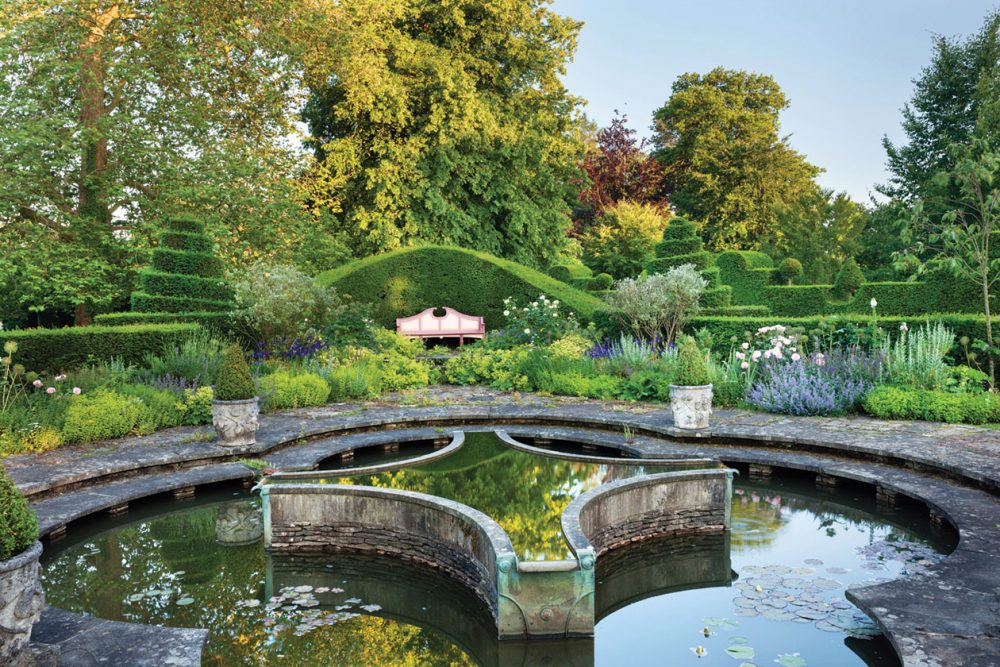
The Lily Pool Garden has a raised, cross-shaped feature from which flowing water produces a soothing trickling sound.
Elsewhere, the Cottage Garden, Arboretum, amusing topiaries, and collection of hostas are inspiring in their own ways. Brightly painted garden gates lead to other special pausing places, including an area where the king has installed a wall sculpture of his grandmother, the late Queen Mother, whom he adored. And in a secluded, dappled spot tucked under the limb of a gigantic tree, there is a wooden likeness of Charles and Camilla.
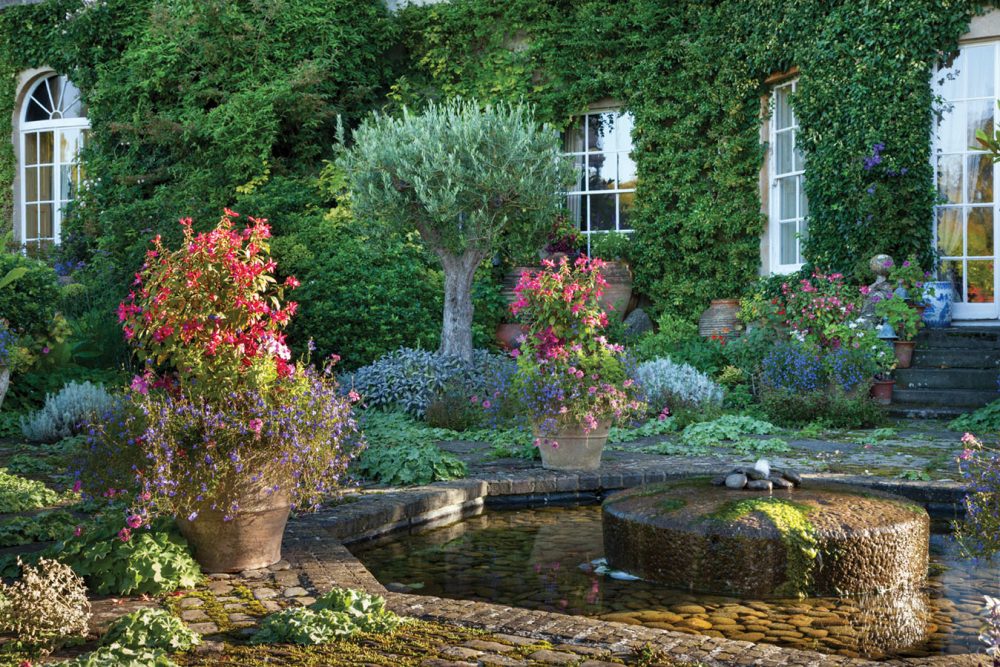
The Terrace Garden near the ivy-covered back of the house is a colorful affair centered around an octagonal pool with a fountain. (GAP Photos/Highgrove/A. Butler)
If it is apparent that King Charles has poured heart and soul into transforming the property into his own special sanctuary, it comes off as a lighthearted and joyous frolic with Mother Nature. The purely organic and self-sustaining spot that beckons insects and birds to come and stay has now become their paradise.
As for visitors, it’s a sure bet that most will plan to return, compelled to see the shimmer and shine of this magical place in every season.
More Scenes from Highgrove
Click the arrows (or swipe if on a mobile device) to see more
By Marion Laffey Fox
EXPERIENCE THE COTSWOLDS
The Cotswolds district in West Central England is blessed with an embarrassment of riches, including perfectly preserved stone villages that literally stop you in your tracks. See more.



